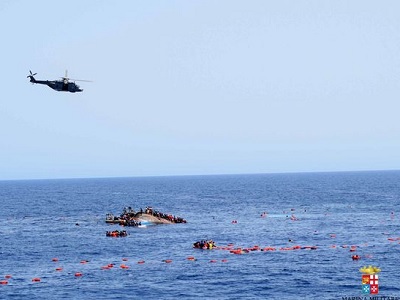
By Mahmoud Zidan
In case you are not familiar with Harambe the gorilla, although I doubt it, I am going to briefly tell you his/its story. Harambe is a gorilla that was shot dead last week to rescue a four-year-old child who fell in the gorilla’s moat-like enclosure.
The event was captured on tape, showing the child being dragged from one side of the moat to another. In the tape that went viral, one can hear screams, including those of the mother, who was trying to comfort her child while he was in the “captivity” of the gorilla. The zoo officials had to act, but they only had two options: tranquilizing the gorilla or killing him. They eventually chose the latter, arguing that the child was in a life-threatening situation. So far, this news story looks like an adventure story, a story that one can generally find in the entertainment section of newspapers and magazines.
Yet, it has been front-page news. For four consecutive (until the time of writing this piece), I have been following the news story on the websites of the New York Times, The Guardian, Fox News, CNN, The Independent, the New York Post, and The Sun, to mention but a few. The story was mostly the first on those news agencies’ websites and sometimes ranked among the most popular items.
Criminal charges possible amid public outcry over #Cincinnati #gorilla death https://t.co/sSwAariaej
— RT (@RT_com) May 31, 2016
Often accompanied by in-depth analyses, it caused ripples to the extent that there was a huge outcry by Animal Rights groups over the zoo’s decision. Some people decided to boycott the zoo (launching a hashtag to achieve that goal), others demonstrated at the gate of the zoo, and yet another group started widely circulated online petitions.
They all claimed that the death could have been avoided, especially because Harambe was from an endangered species. They further claimed that the screams of the spectators were the cause of the violent behavior of the gorilla. They also argued that the child was in the safe hands of the 450-hundred-pound gorilla, as gorillas are well known to treat human children as if they were their own.
The zoo managers, on the other hand, defended their decision, sticking to their guns—both literally and metaphorically. But the media did not let it go at that. In fact, a CNN report was entitled, “Who’s to Blame for Harambe’s Death?” According to some, the blame should be laid on the mother, while others brought up the father’s background. The last thing that I read was that there is now a federal investigation of the toddler’s parents—who are incidentally African Americans (a succinct article by Neha Shah “Our Reaction To Harambe the Gorilla—and the Black Boy Who Fell Into His Cage—has Everything to Do With Race,” which appeared in The Independent, discusses the racialization of the story).
This week in news: 1000+ #refugees died crossing the Med & 1 gorilla was shot a zoo. Which one caused more outrage? pic.twitter.com/gtQ7rSl81b
— Tirana Hassan (@TiranaHassan) June 4, 2016
Now, we know the name of the gorilla, his history, the name of the zoo, the zoo procedures in cases of emergency, and the city in which this saga took place. I even looked up information about the endangered species and its natural habitat (being Africa in this case—a fact that requires a pause). In the meantime, something else happened, about which similar questions were not posed. Over the last two weeks, more than 700 refugees or migrants have died—or more precisely, have been killed—according to UN statistics. Those losses did not even merit much comment and reporting, with the gorilla story taking center stage.
The same questions that were posed about Harambe were not asked about “them”:
Why was it difficult to rescue them? How many were they? Do we know their names? Where did each one of them come from? Who profited from “smuggling” them? Do we know the level of suffering they had to experience? Or do we only know that they are “demographic threats,” “ticking bombs,” or “sponges”? The absence of those questions leads us to ask more fundamental questions: Are they human? Do they deserve to live with dignity? Should they be remembered?
#EU: Returning #refugees to Turkey is reckless, immoral and illegal. #EUTurkeyDeal https://t.co/vvsAz0MCcl pic.twitter.com/SdkWP1Rnkh
— AmnestyInternational (@amnestyusa) June 3, 2016
Harambe, the gorilla, was remembered. In contrast, people from our region were not, as they do not count. Neither do its animals and environment. For instance, very few talk about the destruction that the Israeli colonial machine has caused to fauna and flora in its regular offensives on Gaza.
This is not to suggest that we should not pay attention to the death of the gorilla. On the contrary, we should think about it seriously and think about the ethics of using animals as exhibits. We should also prevent anybody—like the Thailand monks who sold tigers’ body parts—from abusing animals.
But at the same time, we should place equal, if not more, emphasis on the lives of the members of our own species and remember that the loss of any human being is the loss of a unique human being.
Only then can we begin to establish a more peaceful world.
– Professor Mahmoud Zidan lives in Jordan. He contributed this article to PalestineChronicle.com.





